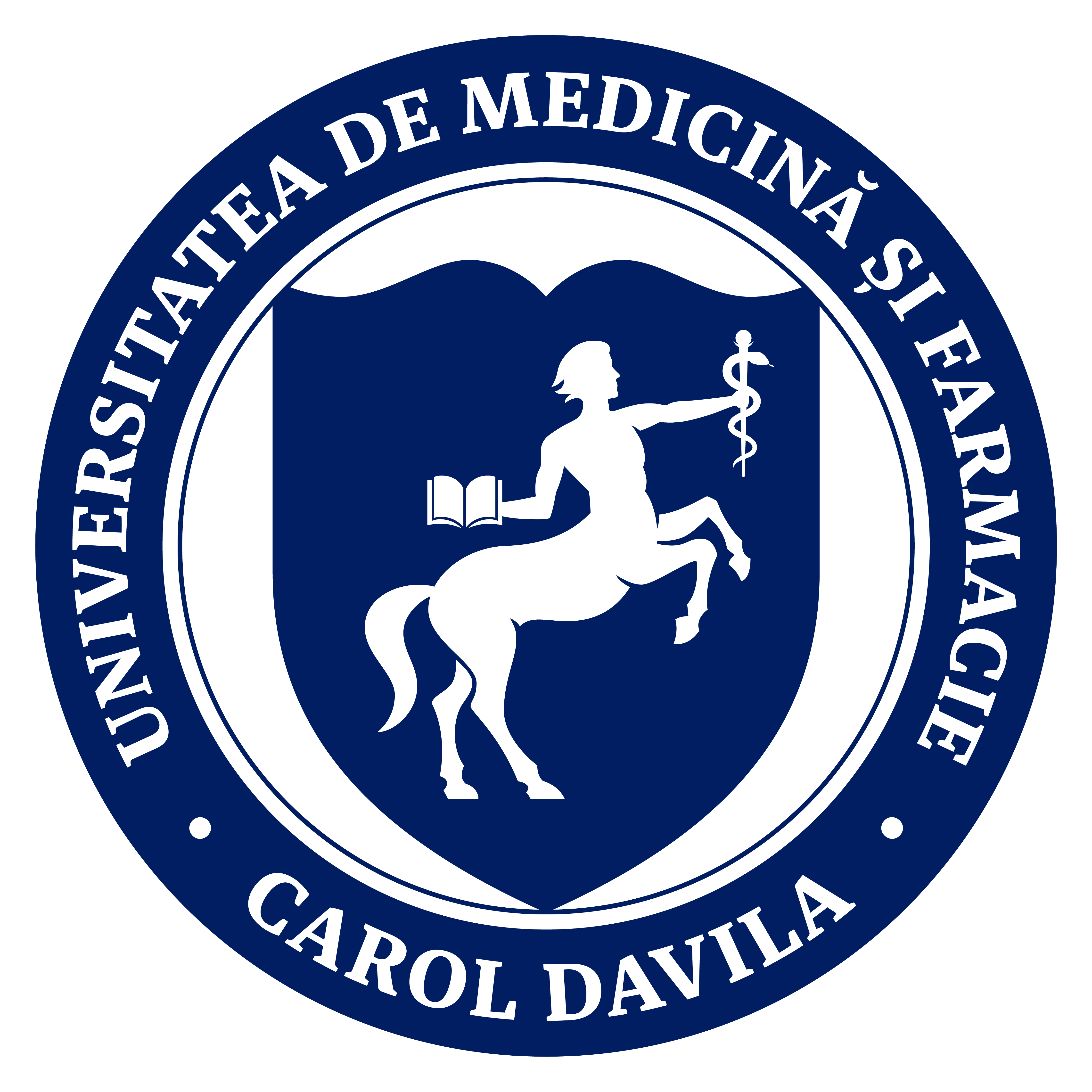Discipline - Physiology
- List of academic staff
- Description of teaching and research activity
- Useful information for students
- 5-10 keywords that describe subfields of interest for the research activity
- 5 of the most representative research projects
- Up to 10 of the most significant scientific projects
| Associate Professor | Balan Daniela Gabriela, PhD | tenured |
| Lecturer | Stanescu Spînu Iulia-Ioana, PhD | tenured |
| Assistant Professor | Balcangiu-Stroescu Andra Elena, PhD | tenured |
| Assistant Professor | Chiperi Liviu Vasile, PhD | fixed term |
The teaching activity of the department targets the learning of general and oro-facial physiology, of the basic principles and concepts required for the understanding of system/organ functions, as well as the integrative physiological mechanisms.
The knowledge and proper use of physiological notions, of functional particularities in organs and systems of the human organism, especially of the oro-facial system, the understanding of the function of the organism in normal conditions and the ability to adapt to internal and external changes, lays the foundation of medical reasoning for the understanding of human pathology and the correlation between morphofunction and clinical elements.
The research activity targets aspects of general physiology, and also components of the oro-facial system, in particular and pathological conditions.
The purpose of the activity is to offer students the necessary means to know the physiological mechanisms, as well as the specific way the oro-facial system works, and its relationship with other organs and systems.
CURRICULUM
- Homeostasis – water and water compartments of the organism. Transport through membranes – osmosis. Water-regulating hormones
- Cardiovascular physiology – cardiac cycle and its mechanical and electrical manifestations. Cardiac noises, arterial and venous pulse, apex shock, EKG. Properties of the heart: automatism, excitability, conductivity, contractility. Factors that influence the properties of the heart. Frank-Starling law of the heart. Cardiac output. Hemodynamics – arterial, venous and capillary circulation characteristics.
- Renal physiology – function of the kidney. Mechanism os urine formations – glomerular filtration, tubular secretion and reabsorption. Renal function regulation.
- Respiratory physiology – respiratory process phases. Perfusion, ventilation, pulmonary diffusion. Hematosis. Blood transportation of respiratory gases. Breathing regulation.
- Oral cavity physiology and G.I. digestion – salivary glands. Saliva secretion reflex. Formation of saliva. Taste sensitivity. Mastication. TMJ joint. Deglutition. Gastric secretion. Pancreatic and bile secretion. Intestinal juice. Intestinal absorption. G.I. tract motility.
- Nervous system physiology – synaptic transmission. Nerve centre properties. Hunger and satiety. Role of the diet in saliva secretion and oral structures. Touch, visual, acoustical, vestibular, ophthalmic sensitivity. Influences of external stimuli on salivary secretion. Occlusion – body posture relationship. Pain sensitivity and oro-facial pain.
- Blood physiology – Volume. Plasma and blood properties. Plasma composition – main compounds. Saliva constituents with origin in the blood – diagnostic relevance. Haematocrit. Erythrocyte. Haemoglobin. Haemolysis. Blood groups – OAB and RH; transfusion. Leukocytes. Immunity. Immune response mechanisms. Mechanisms. Defence processes against bacteria, viruses, fungi. Platelet cells. Primary and secondary haemostasis – mechanisms, stimulation, inhibition. Fibrinolysis – mechanisms, stimulation, inhibition. Haemostasis in dental practice.
- Endocrine gland physiology – pituitary and hypothalamic hormones. Thyroid hormones. Hormonal influences on saliva and oral structures. Bone cells. Phospho-calcic equilibrium – systemic and dento-maxillary level. Adrenal hormones. Hormonal influences on saliva and oral structures. Pancreas – insulin and glucagons. Hormonal influences on saliva and oral structures. Gonad physiology. Sex-hormones. Hormonal influences on saliva and oral structures. Age influence on the oro-facial system.
RULES OF THE TEACHING ACTIVITY
- Course attendance is mandatory
- For the practical courses, students will read in advance the theoretical and practical notions from the bibliography
- Students with more than 3 absences (motivated or not) will not be admitted in the practical exam.
- Students that haven’t recovered their absences will not be admitted in the practical exam.
- There will be a number of written tests from the course and practical course material, throughout the semester.
- Practical exam at the end of the semester – it is eliminatory.
- For the final exam (multiple choice type) are admitted students that have passed the practical exam; the exam is eliminatory – not passing means not being admitted for the final exam, regardless of the marks received throughout the semester.
BIBLIOGRAPHY
- Practical works in physiology –vol. 1, 2nd edition, for students of the Faculty of Dental Medicine. Stefan Ionescu, Daniela Badita, Monica Dragomir, Viorica Nita. Tehnoplast Company. 2003.
- Physiology –vol. 1, for students of the Faculty of Dental Medicine. Daniela Badita, Stefan Ionescu, Adina Olteanu, Monica Dragomir. Tehnoplast Company- 2004.
- Physiology –vol. 2, for students of the Faculty of Dental Medicine. Daniela Badita, Stefan Ionescu, Adina Olteanu, Monica Dragomir. Tehnoplast Company- 2008.
- Cardiovascular physiology - for students of the Faculty of Dental Medicine. Daniela Badita, Monica Dragomir, Adina Olteanu. Tehnoplast Company. Bucharest, 2005.
- Guyton And Hall – Textbook of Medical Physiology
- http://www.justmed.eu/
- saliva
- oral physiology
- crevicular fluid
- saliva markers
- periodontal disease
- „Considerations on sanguine and salivary immunological/physiopathological changes in viral/toxic hepatitis"
- „Oro-dental aspects in osteoporosis patients"
- „Saliva: diagnostic fluid for autoimmune diseases"
- „Nutritional implications in chronic hemodialysis patients"
- "Stem-oral keratinocytes – characteristics, molecula mechanisms and roles in normal/pathological oral epithelium"
- "Study of synergic effect between some metal ions and adrenaline on human blood platelets aggregation"
- "Correlation of salivary and serum changes in hepatitis C viral infection"
- "The effects of chronic alcohol consumption and smoking on serum and saliva aminotransferases levels"
- "Periodontal health status evaluation using CPITN score, in a group of patients with rheumatoid arthritis"
- "Salivary biomarkers of inflammation: clinical significance in systemic lupus erythematosus"
- "Influence of HbA1c and low phosphorus diet on cognitive impairment in chronic hemodialysis diabetic patients"
- "Cardiovascular risk in chronic hemodialysis patients –a systematic review"



